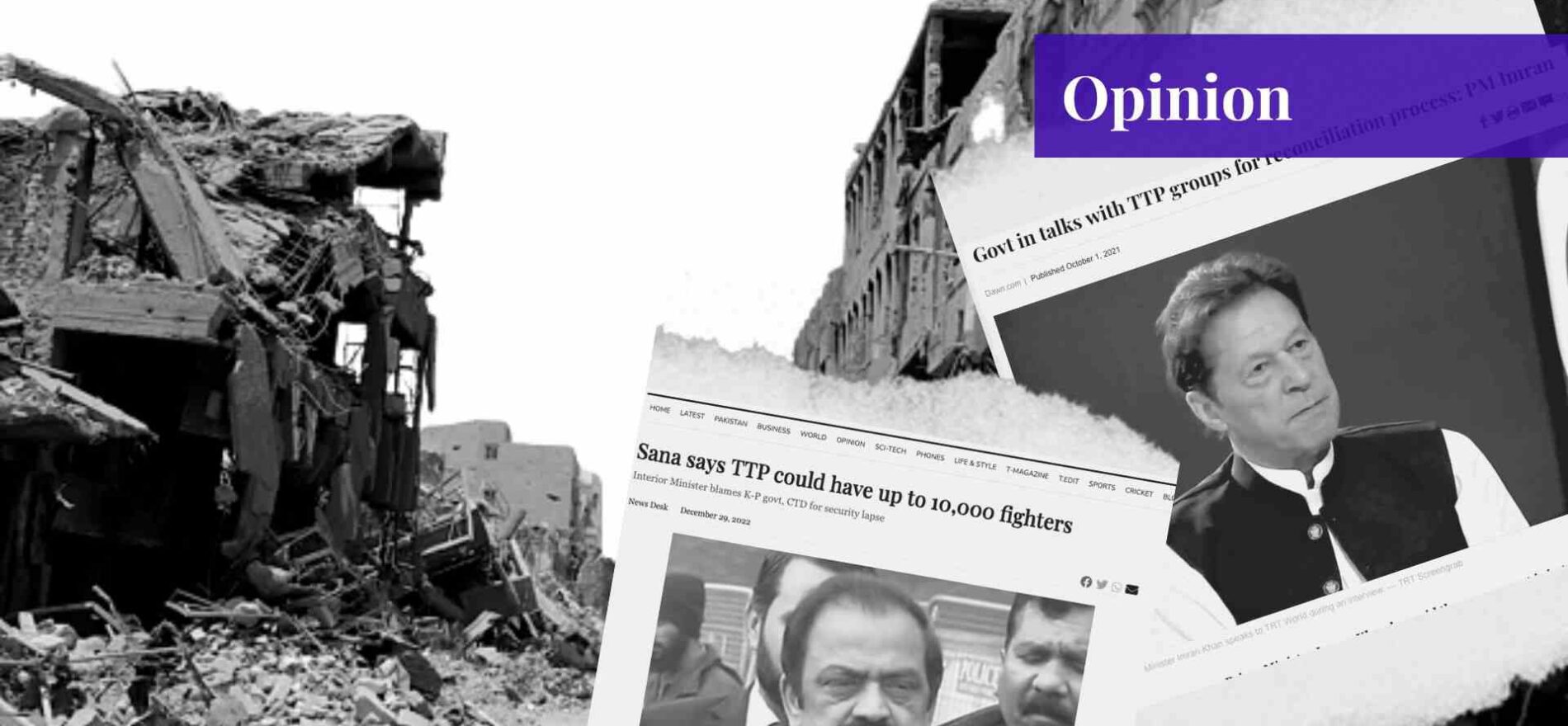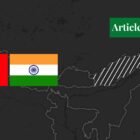Sarmad Ishfaq is an independent researcher and writer whose work has been published by Harvard Kennedy School Review, The Diplomat, Open Democracy, Paradigm Shift, Mondoweiss, and Eurasia Review to name a few. He has also been published by several international peer-reviewed journals such as Taylor and Francis' Social Identities. Before becoming an independent writer, he worked as a research fellow for the Lahore Center for Peace Research. He has a master's degree in International Relations from the University of Wollongong in Dubai where he was recognized as the 'Top Graduate'.
Introduction
The recent suicide bombing in Islamabad, the first in eight years, highlights not only how successful Zarb-e-Azb was due to the hard work of the armed forces of Pakistan, but also how jaded the country’s policies have been recently to allow such terrorist attacks by the TTP to occur again. While the writing for such an egregious event was on the proverbial wall when the TTP reared its head in Swat several months back, the frail government has done nothing to counter such machinations.
Such attacks gained traction after the Taliban takeover in Afghanistan on 15 August 2021 and the previous government’s decision to give peace talks with the TTP a chance. According to the Pakistan Institute of Peace Studies (PIPS), terror attacks proliferated by 51% after the Taliban takeover in Afghanistan.
In Swat, local elites and politicians are being blackmailed and extorted for money by the TTP. The veracity of such threats is evidenced by the TTP’s attack on a school van that killed the driver and injured two students in Swat. In response, the residents of the valley came to the streets in anti-TTP and anti-government protests. The message was clear: they had gone through this before and did not want to relive this horror.
The military initially stated that the TTP specter in Swat was more hyperbole than fact but with incidents escalating, so is the fear that a TTP resurgence might be nearing. The recent hostage situation in Bannu’s Counter-Terrorism Department (CTD) where one of 33 TTP detainees managed to secure a gun and forced a hostage situation has been a cause of concern as well. The Special Service Group (SSG) was called in and after a 2-day operation, it managed to secure the facility by killing most of the terrorists and rescuing the hostages.
So why have such attacks proliferated in recent months? In my opinion, there are 3 primary reasons:
- Taliban Takeover in Afghanistan
- Peace Negotiations with TTP
- Imran Khan’s Ouster
Taliban Takeover in Afghanistan
The Afghan Taliban has affirmed repeatedly that Afghan territory would not be used by the TTP for terror attacks in Pakistan. However, this has not materialized as promised. Pakistan was hopeful that the newly formed Taliban government would be sympathetic to Pakistan (who aided the Taliban-America negotiations) but this has not been the case. In fact, the contrary has transpired: border firings and clashes have increased on the Durand Line as well as a cross-border blame game akin to the one before the Taliban government.
The Taliban has not taken any serious action against any militant group on its soil except ISIS, which challenges its writ directly. This means that safe havens provided to the TTP, its ideological brother, and others have led to a surge in terrorist attacks within Pakistan. The US withdrawal also aided the TTP in securing more or augmenting its strongholds in Afghanistan.
Pakistan’s optimistic expectations that the Taliban will crack down on the TTP have therefore been a grave miscalculation as both militant groups still enjoy strong ethnic bonds, and similar ideologies, among other things. Due to this, Pakistan’s frustration manifested with alleged airstrikes on Afghan territory housing TTP strongholds, to the Afghan Taliban’s dismay.
Issues such as the Durand Line and Pakistan’s fencing of it have perturbed the Taliban regime which does not recognize the border and considers this unilateral action. There are reports that the Taliban have been removing the fence from certain areas. Balochistan, too, has seen Baloch separatist elements being emboldened which is another cause of concern for Pakistan.
Peace Negotiations with the TTP
PTI enjoys a lot of renewed popularity after Imran Khan’s ouster; however, the PTI government and the military’s decision to negotiate with a bloodied and battered TTP has backfired, to say the least. Proponents of PTI’s peace talk strategy could claim that this approach was adopted to appease the new Taliban government and attempt to de-weaponize the TTP (politicize them). Whatever the case may be, it has not worked out as hoped.
History is witness to many peace negotiations, with militants falling apart and not working more often than not. For example, the Tamil Tigers in Sri Lanka masterfully used peace negotiations and ceasefires to rebuild and consolidate power whenever they were on the ropes. Pakistan’s track record in terms of peace talks with a rapacious group such as the TTP has been abysmal.
Critics of the peace talks, myself included, cited how could one negotiate with a terror group that was responsible for the APS massacre, among other gross atrocities. The TTP was emboldened due to the Taliban’s re-entry as the kings of Afghanistan who thereafter stated that Pakistan’s issue with the TTP was the country’s own. The Taliban did mediate negotiations between both sides in Kabul but was not swaying the TTP as much as the Pakistani government perhaps wanted.
During the peace talks, the TTP broke ceasefires that raised more eyebrows as to its real intentions. Pakistan also allowed the release of a number of TTP militants, which backfired when the same militants returned with arms. The failure to reach a peace agreement with the TTP was also because of its outrageous demands, which included the reversal of the tribal areas (FATA) merger into the KPK province.
The space provided by the negotiations that began in 2021 has proven to be disastrous and might signal a new military operation that will weigh down an already encumbered economy. A National Counter-Terrorism Authority (NACTA) document unveils that the “TTP, during peace talks process gained considerable ground; increased its footprint and magnitude of activities,”
Imran Khan’s Ouster
Although it was Imran Khan’s decision initially to negotiate with the TTP (that proved catastrophic), ironically his ouster has also augmented the TTP’s strength. This, in my opinion, is due to the indolent current PDM government, which many in Pakistan see as being brought in by American and internal actors.
Since Imran Khan’s exodus, the mainstream media, mostly siding with the PDM, have given coverage to the political crisis in the country. Even the deadly floods that ravaged Pakistan were initially brushed off to air the politics between PTI and PDM. The same happened when social media reports began breaking out vis-à-vis the TTP re-emerging in Swat. The mainstream media was slothful to report this as well until the TTP menace became oversized.
Since the PDM government took control, the already feeble economy has dipped into further oblivion. Inflation has reached new records as has the dollar’s strength compared to the rupee. The IMF package has been marked with stark vicissitudes and due to the package, the cost of electricity, fuel, and food have soared. Many people in Pakistan remain livid at Imran Khan’s unceremonious exit and how things have transpired since.
The back and forth between the PTI and PDM has enabled a political crisis the likes of which has not been experienced in recent memory. This indicates that there is a huge economic as well as political vacuum, which made the country, including the politicians and military, look towards it, while the TTP slowly grew into a coherent threat yet again. When India saw Pakistan shooting itself in the foot post-Imran Khan, it did not vacillate but reinvigorated its militant proxy efforts in Balochistan and KPK which is why the BLA in Balochistan and TTP in KPK have become a problem.
Conclusion
Many were hopeful, including me, that Pakistan could secure its western border as Indian influence had declined in the region right after the US’s defeat in Afghanistan. However, due to poor management, capricious policies, miscalculations, and some things that were beyond control, terrorism is escalating once again. Depending on how the government and military respond will indicate if this is a short-term scare or if it metamorphoses into a long-term boogeyman.
Responding to an even small-scale insurgency will drain the limited resources the country has. Facing a perhaps imminent economic default while grappling with militancy leaves the country in a truly unenviable scenario. Therefore, a miracle or perhaps several are needed to come out of this mess. One thing is for certain though: now is the best time to be an enemy of Pakistan.
If you want to submit your articles and/or research papers, please check the Submissions page.
The views and opinions expressed in this article/paper are the author’s own and do not necessarily reflect the editorial position of Paradigm Shift.



















